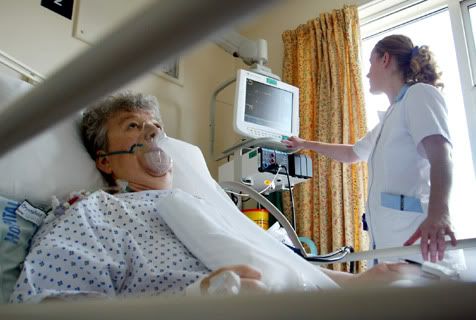According to a new reports, a deadly strain of bacteria thought to be rare on the West Coast is appearing in large numbers in Southern California.
The Los Angeles County Department of Health has reported 356 cases of carbapenem-resistant Klebsiella pneumoniae (CRKP) in seven months last year.

Previous outbreaks in other states show a 35% death rate. There is only one anti-biotic that can work on infected people, but carries harmful side effects.
This is the first time CRKP has been observed in the Los Angeles area with an “unexpectedly high” infection rate found exclusively in health care facilities like hospitals or nursing homes.
It doesn’t sound like officials know much about this mysterious rise in infections from the bacteria either, as study authors said:
“We do not know if the presence of CRKP in these long-term acute care settings is the result of improper care, or has more to do with the population they serve.”
Q: What is CRKPP?
A: CRKP stands for carbapenem-resistant Klebsiella pneumoniae, which simply means that the bacterium — which is a “gram negative” type bacteria that is related to common organisms found in the gastrointestinal tract like E. coli — is resistant to carbapenems, a type of antibiotic that until recently was the “antibiotic of last resort.” Sometimes it still is, but not always. Previously, carbapenems would work against bacteria like Klebsiella pneumoniae that were resistant to every other type of antibiotic.
Bacteria have been developing resistance almost as quickly as we’ve been able to develop new antibiotics.
Q: How does CRKP’s drug resistance work?
CRKP strains contain enzymes that destroy the carbapenem. The huge problem, though, is the company that [CRKP] keeps. They are alongside other bacteria that are already multidrug resistant and they contain genetic elements, pieces of DNA, that can be transferred to those other bacteria. [That is], Klebsiella pneumoniae can transfer the genetic material of their resistance and have already done so in the case of E. coli hospital-associated infections.
Gram-negative [bacteria] are more difficult to treat with antibiotics even without being drug resistant because they have more structural challenges. For example, they have two outer membranes, so antibiotics have to get through two separate barriers to target them effectively. They also contain multiple efflux pumps that pump out toxic substances, such as antibiotics.
Q: When did CRKP first emerge?
A: I’ve known about these organisms for 10 years or so. They first surfaced in North Carolina, caused a big problem in New York, in Manhattan. They’d already spread to California; they are nothing new to California. There just seem to be increased instances of infection, so we’re hearing about it [now].
Q: How can we avoid CRKP infection?
A: Stay out of the hospital and nursing homes! No, you can’t do that. It isn’t what you have to do so much as what the hospitals have to do. First, they need to identify these organisms, send cultures to reputable laboratories. And then the next step is to follow the CDC’s standard isolation techniques: quarantine those infected, take contact precautions by wearing gowns and gloves and practicing hand washing. And, by the way, we’re talking about major, very good, university-affiliated hospitals [with these problems].
Are you likely to go out and get infected on the street? Chances are low. But the reason [these bugs] are so frightening is because they spread and mutate, so that now many of them [including CRKP] are susceptible only to [the antibiotic] colistin, which is very toxic and causes kidney damage. Some have even become resistant to that, and then there are very few lines of defense. So with the mutation of the bacteria coupled with the decline in new drugs, you can see we are headed toward collision.


